The One Simple Factor that Separates The Pro's On Tour That Make Big Money From Those That Don't24/5/2013
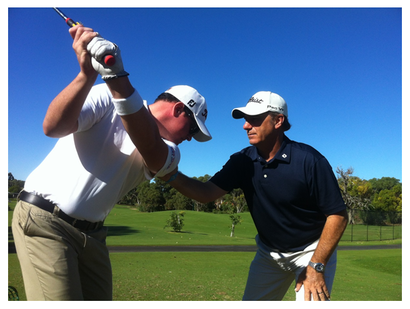 I recently sat down with one of our students in our Tour Golfer Bridging Program (he's 16 years old) to discuss his goals with his golf. Like many young golfers we work with his major life goal is pretty simple, straight forward and to the point; “I want to play on the pro tour in 4 years,” was his answer. “Great I said, that is an admirable goal that many before you and after you will have but it doesn't tell me much does it?” “What do you mean?” “Well, of course I know what you mean when you say that you want to play on a professional golf tour however it’s a little vague don’t you think? I mean after all there are many golfers playing on pro tours around the world and most of them are broke or going broke!” “In other words, they spend a lot more money than they make trying to play golf on a pro tour”. “They also had the goal of playing on a pro tour just like you and when they got there they had achieved their main goal, but then what?” “You see it is not enough to just want to play on a pro tour I think you have to have bigger, richer and more specific goals than that”. “You need to prepare your game in such a way that when you do get onto a pro tour you will be ready to make a high percentage of cuts and finish high enough up the money list to make a lot more income than you spend after expenses and taxes. You see the reality of professional golf is that you are using your golf skills and playing ability to play good enough to make money from the game of golf. Many young golfers just like you want to play in the big tournaments you see on TV and earn the big money playing on a major golf tour, but it takes more than a phenomenal shot-making ability to make it on the pro tour.” 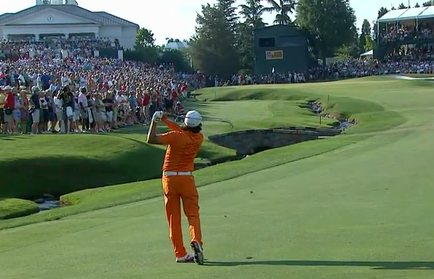 “How many golfers tee it up in a pro tournament? “I don’t know, about 150?” “Yes 150 to 160 players will tee it up in most professional golf tournaments, and how many golfers are left in the field once the cut has been established? "I'm not sure?" "About 60 professional golfers get the opportunity to make a check in the tournament after they make the cut and they can make a good check if they finish high enough up the money list”. “So out of 160 golfers who tee it up in the tournament every week in smaller pro tournaments about 20 will make a good check for the week which is about 12.5 percent of the field”. “I never thought about it like that”. “It is no small matter making a decision to become a pro tour golfer and if you want to play on the pro tour by the time you’re 20 years old then you have got to understand the professional game – which is a very different game to the amateur game”. “So let’s discuss the facts that should influence the way you go about achieving your goal of playing successfully on a pro golf tour. "Great!" "Firstly you should realize that the main difference between the amateur golfer and professional golfer is their attitude about producing a score is quite different. If you don’t play well or up to your expectations in an amateur event you can chalk it up to experience. In other words it doesn't matter too much that you didn't play so well because there’s always another tournament to play in. Now although that level of thinking is also consistent in professional golf, the real difference is that you cannot afford to chalk it down to experience on the pro tour because it costs you lots of dollars every time you tee it up. In pro tour golf the formula for success is actually quite simple to understand: Level of Success = Earnings (Income) - Expenses In pro tour golf your level of success is equal to your ability to make a lot more money than you spend. And to make cuts and make money you have to learn how to lower your high score average". Lower Your High Score Average 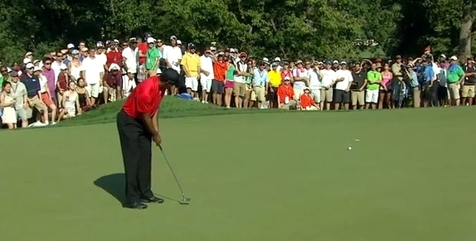 “The key to understanding success on the pro tour golf is that you have to build an attitude of never giving up on score. You simply cannot let yourself have scores above 2 over par on your very worst day on the golf course". "Why so low?" "It’s simple really; if you score + 2 on the first day of a tournament you can come out the next day and produce an under par score that will help you to make the cut. If you have higher than this score then you will miss the cut most of the time. Think of this as the ceiling of your golf scores". “Let me give you a good example of what I mean. Andy Bare a pro tour golfer playing on the Web.Com Tour in 2012 was ranked 100th in score average (actual) with a competitive score average of 71.22 from 59 competitive rounds. The par average for the 21 tournaments he played in was 71.21, so he was .1 over par for his 59 competitive rounds". “That’s a pretty good score average isn’t it?” “Par golf for 59 rounds of golf is a good average in amateur golf, but as you’ll see it is not nearly good enough to make a good income on the Web.Com Tour, or for that matter any of the professional golf tours. Here's a profile of his scores for the 2012 season for you to study". "Andy Bare made 43 percent of cuts for the tournaments he entered and earned $28,585 for the 21 tournaments he played in. So if you think about it, he competed for 21 weeks and let's say that with travel, accommodation, transfers, meals, caddy and so on he would have spent a minimum of $1500 dollars per week on average for the weeks he competed on the Web.Com Tour, and based on his earnings of $28,585 less his expenses of $31,500 he would have made a loss of just under 3 thousand dollars for the season". 28,585.00 (Earnings) 31,500.00 (Less Expenses) 2,915.00 (Loss) "That's not a lot of money for the effort. I mean he had a pretty good average for the season" "You're right, its not a lot of money for the effort, and don't forget he needs money for the next season." “In contrast another Web.Com player Matt Weibring also played 59 competitive rounds of golf on the Web.Com Tour in 2012 and his score average (actual) was 69.87 for the 22 tournaments he played in. The par average for the 59 rounds was 71.16, so he was 1.3 strokes under par on average. He made 61 percent of cuts for the tournaments he entered (20 percent more than Andy Bare) and he earned $130,239, or about 100,000 dollars more for the same amount of rounds of golf. You can see from this that 1.3 strokes per round difference makes a BIG difference to your bottom line". 130,239.00 (Earnings) 31,500.00 (Less Expenses) 98,739.00 (Profit) "Wow! that is a big difference". "Remember there's just 1.3 strokes difference per round". A, B and C Game “Now this is where you learn to understand the importance of lowering your high score average”. Think of your high score average as any score that's 2 strokes higher than your competitive score average. We will call this your C game. Your B game is when you score around your competitive score average and your A game is when score 2 or more lower than your average ok?” “Got it” “Both of these Web.Com players are really fine tour golfers however Matt Weibring had a lower high score average for the season. Matt Weibring had 11 C Game rounds (+ 2 or more above average) with a high score of 75 in his 59 rounds and a high score (C Game) average of 74.45 for the season. Andy Bare had 13 C Game rounds with a high score of 78 and a high score average of 75.61 for the season”. "But you said that you shouldn't have more than plus 2 for your C Game rounds?" "That's true, in pro tour golf you shouldn't if you can help it, because when you do, you will more than likely miss the cut and make no income for the week. Have a look at the illustration below to understand what's really going on here". "What do you see?" "Well the most obvious thing is the variance in scores with Andy Bare compared to Matt Weibring. Even though his high score average is only about 1 stroke higher, he's not as consistent as Matt at keeping his high score average down". "That's correct, Andy's high scores are higher, which means that he'll miss more cuts over a season". "And if he misses more cuts he can't make as much money because he gets less chances to do so, can he?". "Right again!" "You see this is a really important lesson in understanding pro tour golf. You have to develop an ability to keep your high score average down to be successful". "So your C Game is the key to lower golf scores?" "Well yes and no. It certainly helps you because it helps you keep your competitive score average down over a season. Andy Bare had 19 scores under 70 which is 32 percent of his scores better than 70, and an A Game average of 68.1. But because he shot some bad C Game scores he missed more cuts and made less income". "Matt had 29 scores lower than 70 of his 59 rounds which is 49 percent of his rounds below 70. His A Game average was 67.1 which again is only 1 stroke better than Andy. You can see that keeping the high scores off your score card is the key to producing results that you get paid for in professional golf. These two guys are just two of many highly skilled professional golfers who want to make big incomes from playing golf on tour and by lowering your high score average you make it just a little bit easier". "I can see that now, I would never have thought about it like that. So my goal should be to work harder on my scoring ability so I can keep my high score under control?" "That's right, you have to develop your high pay-off golf skills. All these guys and gals playing on tour can shoot the low score. That is not the problem for them, they have great A Games, but its their C Game average that affects their competitive score average, and that will decide how successful they will be at earning income in professional tournaments. Next week I'll show you the next step in building your plan for transforming your amateur game into a pro level game". "I can't wait to find out what it is". Lawrie Montague and David Milne - Pro Tour Golf College Your Success On Tour is Our Business Comments are closed.
|
Archives
June 2019
|
Proudly Supported By
Copyright © 2011 - 2018 Pro Tour Golf College
Website Managed By Golf Performance Media
All Rights Reserved
Website Managed By Golf Performance Media
All Rights Reserved




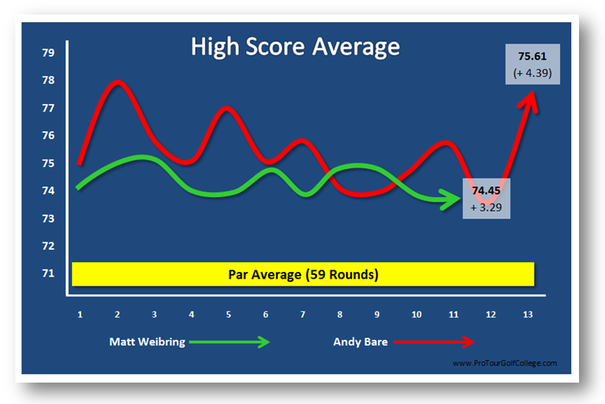
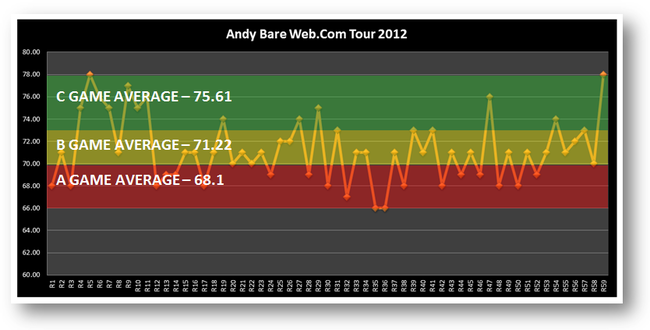

 RSS Feed
RSS Feed



